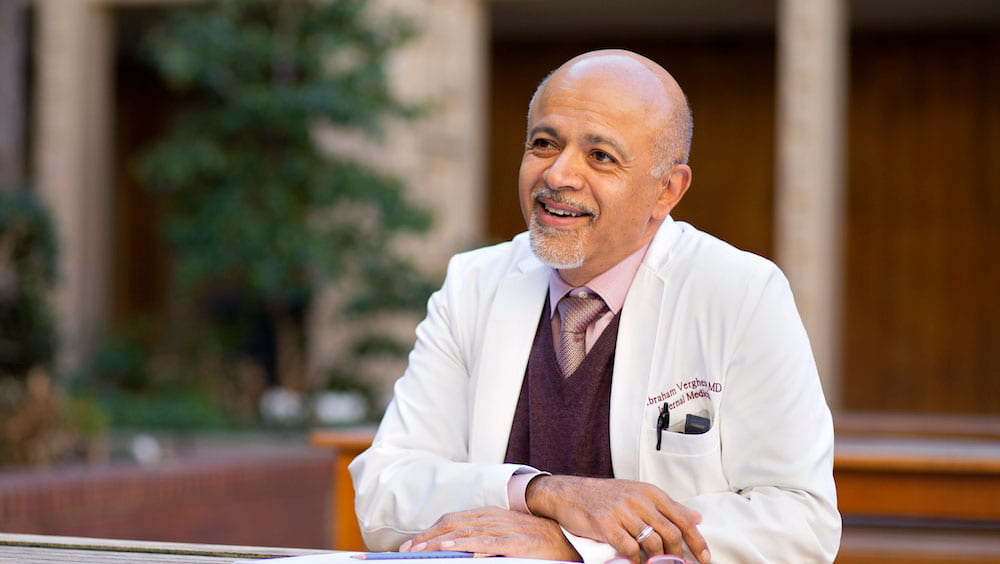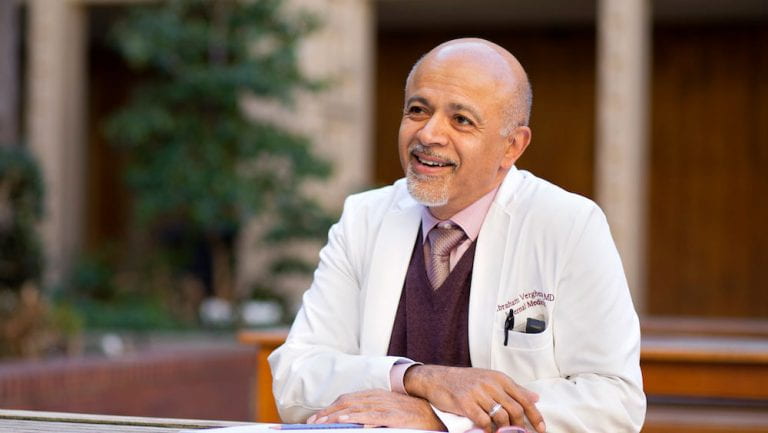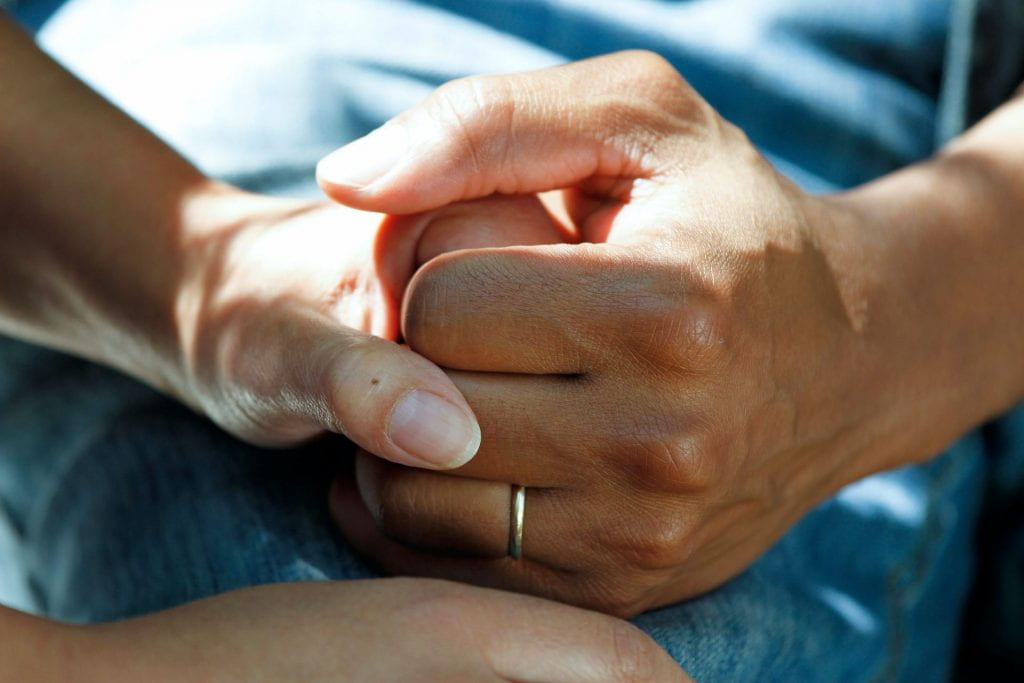
Dr. Abraham Verghese is a physician, best-selling author and professor of medicine at Stanford University of Medicine. Verghese is known for work with bedside medicine and the benefits of providing patients with physical examinations. In a 2011 TEDTalk, Verghese said “Too often these days, rounds look very much like this, where the discussion is taking place in a room far away from the patient. The discussion is all about images on the computer, data. The one critical piece missing is that of the patient.” (Verghese, 2011) Verghese is also known for his creative writing career and has published two nonfiction books and two fiction novels. He believes physicians should read more than scholarly or nonfiction texts, saying “I preach to my medical students that to fully imagine their patients’ lives they must read fiction, because fiction is the great lie that tells the truth (to paraphrase Camus).” (Clarke, 2023)
Dr. Abraham Verghese was born in 1955 in Addis Ababa, Ethiopia to two Indian parents. His parents worked as educators in Ethiopia and he first began his medical education in the country. In an article from the New York Times, Verghese credits W. Somerset Maugham’s book Of Human Bondage as influencing his decision to become a physician:
“Somehow, when I read those words as an underachieving student in high school, it suggested to me that anyone with a curiosity and empathy for their fellow human beings and a willingness to work hard could be a good physician and be rewarded by work that has great meaning.” (Clarke, 2023)
Unfortunately, political unrest interrupted Verghese’ medical education. In the 1970s, the Ethiopian emperor and government were overthrown and a civil war broke out across the country. Verghese, along with his parents and siblings, left Ethiopia for the United States. While living in the U.S. Verghese worked as an orderly. He continued to pursue a career in medicine. He attended Madras Medical College in India and graduated in 1980. He pursued a residency program in Johnson City, Tennessee. In 1983, after completing his residency, he was selected for a fellowship at Boston College School of Medicine. During his time in Boston, he witnessed the HIV outbreak that hit urban areas such as Boston and other major cities. Verghese returned to Johnson City, Tennessee and once again was face to face with the impacts of HIV/AIDS, this time in a rural setting.
When reflecting on that time, Verghese said “I first toyed with the idea of writing because I was so affected by what I witnessed as an infectious diseases specialist during the early years of the AIDS epidemic, taking care of dying men (mostly) who were my age.” (Clarke, 2023) He later wrote about his experiences in his first book My Own Country: A Doctor’s Story of A Town and Its People in the Age of AIDS.
Verghese took a break from practicing medicine and attended the Iowa Writers Workshop at the University of Iowa. He earned his Masters of Fine Arts in 1991. He served as a Professor of Medicine and Chief of the Division of Infectious Diseases at Texas Tech Health Sciences Center. Then in 2007, Verghese moved from Texas to California to work as a professor at Stanford University School of Medicine, a position he still holds.
Dr. Verghese also maintains a successful writing practice and career. Besides his first book, My Own Country, Verghese has also published The Tennis Partner: A Story of Friendship and Loss, Cutting for Stone and most recently The Covenant of Water which is an Oprah Book Club selection. The Covenant of Water has received high praise from reviewers. An NPR review stated “Ever the skillful surgeon, Verghese threads meaningful connections between macrocosmic and microcosmic details so elegantly that they are often barely noticeable at first.” (Bhatt, 2023) The reviewer also noted that “Whether describing the spice craze sweeping across Europe, Kerala’s breathtaking coastal views, the overpowering Madras evening breeze, or the lively Anglo-Indian enclaves, Verghese tends to be lyrical. But he writes with such singular detail and restrained precision that it is a pleasure to be swept along and immerse deeper.” (Bhatt, 2023) If you are interested in hearing Dr. Abraham Verghese speak or want to learn more about his latest release, please see this upcoming Politics and Prose event!
If you would like to learn about Dr. Verghese’s experiences as a physician or his clinical research interests, read his recent publications such as “Medicine is Not Gender-Neutral–She is Male,” “Practices to Foster Physician Presence and Connection With Patients in the Clinical Encounter” or watch his 2011 TEDTalk “A Doctor’s Touch.”
Works Cited:
- Abraham Verghese: National Humanities Medal. (2015). National Endowment for the Humanities. Retrieved May 16, 2023 from https://www.neh.gov/about/awards/national-humanities-medals/abraham-verghese
- Abraham Verghese. (2023, May 16). In Wikipedia. https://en.wikipedia.org/w/index.php?title=Abraham_Verghese&oldid=1155028235
- Bhatt, J. (2023, May 2). ‘The Covenant of Water’ tells the story of three generations in South India. NPR. https://www.npr.org/2023/05/02/1173052459/cutting-for-stone-author-abraham-verghese-new-novel-the-covenant-of-water
- Clarke, R. (2023, April 30). By the Book: The Novel That Led Abraham Verghese to a Medical Career. The New York Times. https://www.nytimes.com/2023/04/27/books/review/abraham-verghese-by-the-book-interview.html
- Verghese, A. (Speaker). (2011). A Doctor’s Touch. TEDTalk. https://www.ted.com/talks/abraham_verghese_a_doctor_s_touch?language=en





